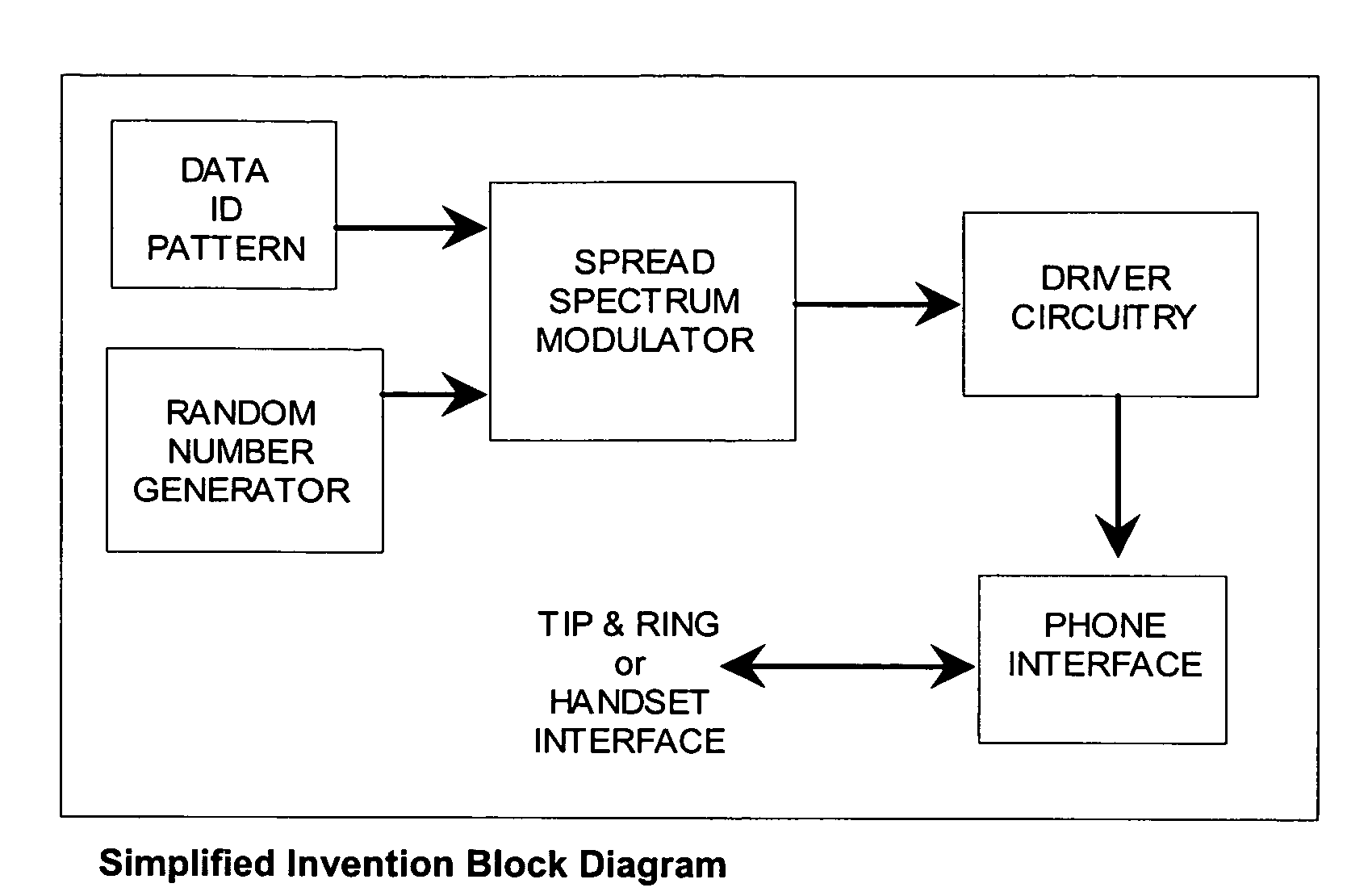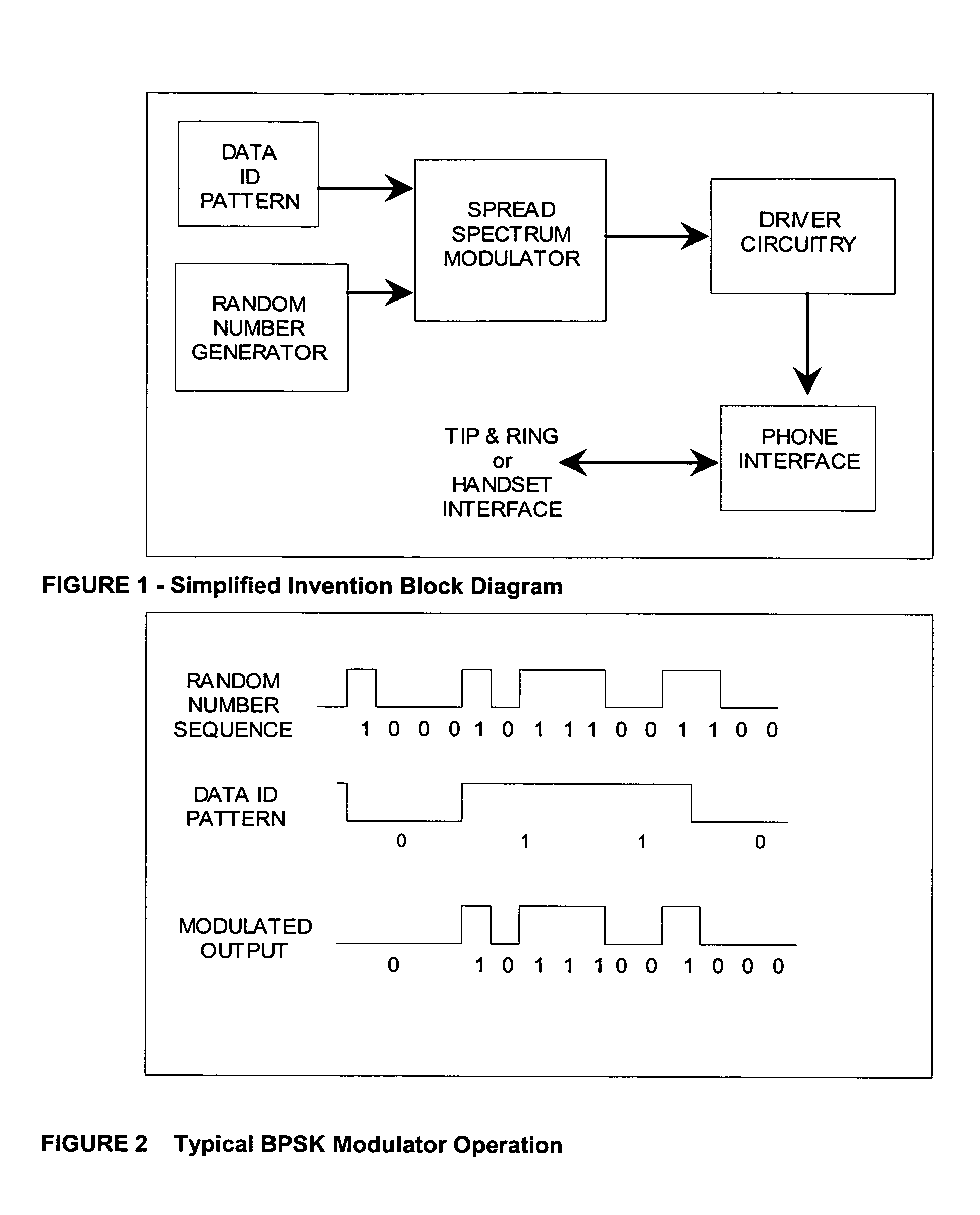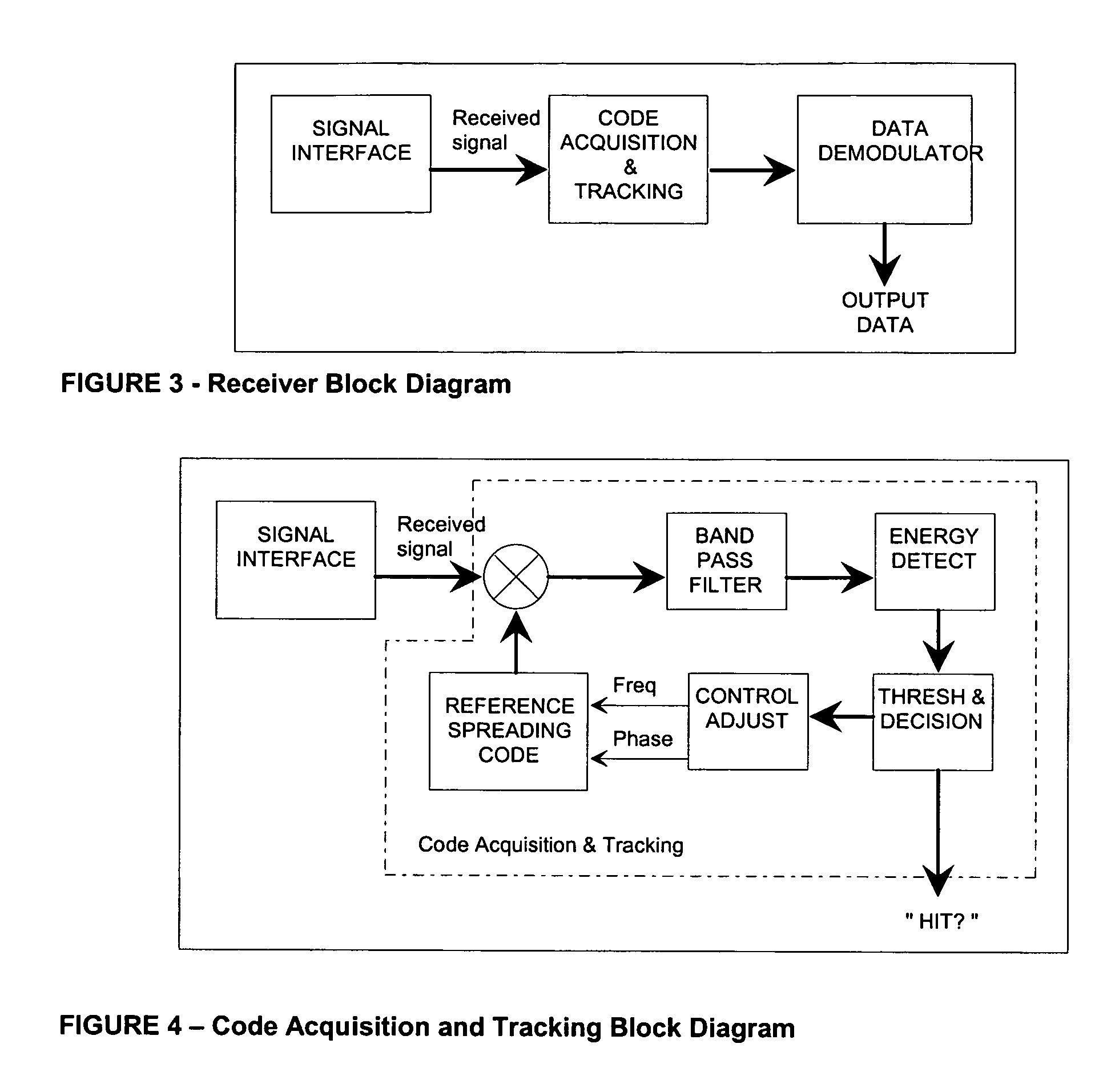Three-way call detection using steganography
a three-way call and steganography technology, applied in the field of telephones, can solve the problems of not being 100% effective at detecting such calls and not being able to call those numbers, and achieve the effects of improving the reliability of three-way call detection, and reducing the cost of operation
- Summary
- Abstract
- Description
- Claims
- Application Information
AI Technical Summary
Benefits of technology
Problems solved by technology
Method used
Image
Examples
Embodiment Construction
[0027]When an end-user listens to a signal such as a radio station, he adjusts his radio set to a number, for example 91.5, on the FM band. For the FM band, the 91.5 means 91.5 MHz, which is the frequency of the signal carrying the music (or “carrier” frequency).
[0028]Each radio station transmits its music or other content on a separate carrier frequency, such as 91.5 MHz, 91.7 MHz, or 96.3 MHz. The end-user selects a desired station by tuning the radio to receive a predetermined carrier frequency. The advantage of such a transmission system is its simplicity, which leads to very low cost products.
[0029]The disadvantage comes when you need to send a signal between multiple points, say between two soldiers in the field, in such a way that no one else can pick up the signal. If one soldier sent the signal at one frequency, 150 MHz, and the other soldier tuned his radio to the same 150 MHz, he would receive the signal. But, so would everyone else who tuned his or her radio to 150 MHz a...
PUM
 Login to View More
Login to View More Abstract
Description
Claims
Application Information
 Login to View More
Login to View More - R&D
- Intellectual Property
- Life Sciences
- Materials
- Tech Scout
- Unparalleled Data Quality
- Higher Quality Content
- 60% Fewer Hallucinations
Browse by: Latest US Patents, China's latest patents, Technical Efficacy Thesaurus, Application Domain, Technology Topic, Popular Technical Reports.
© 2025 PatSnap. All rights reserved.Legal|Privacy policy|Modern Slavery Act Transparency Statement|Sitemap|About US| Contact US: help@patsnap.com



